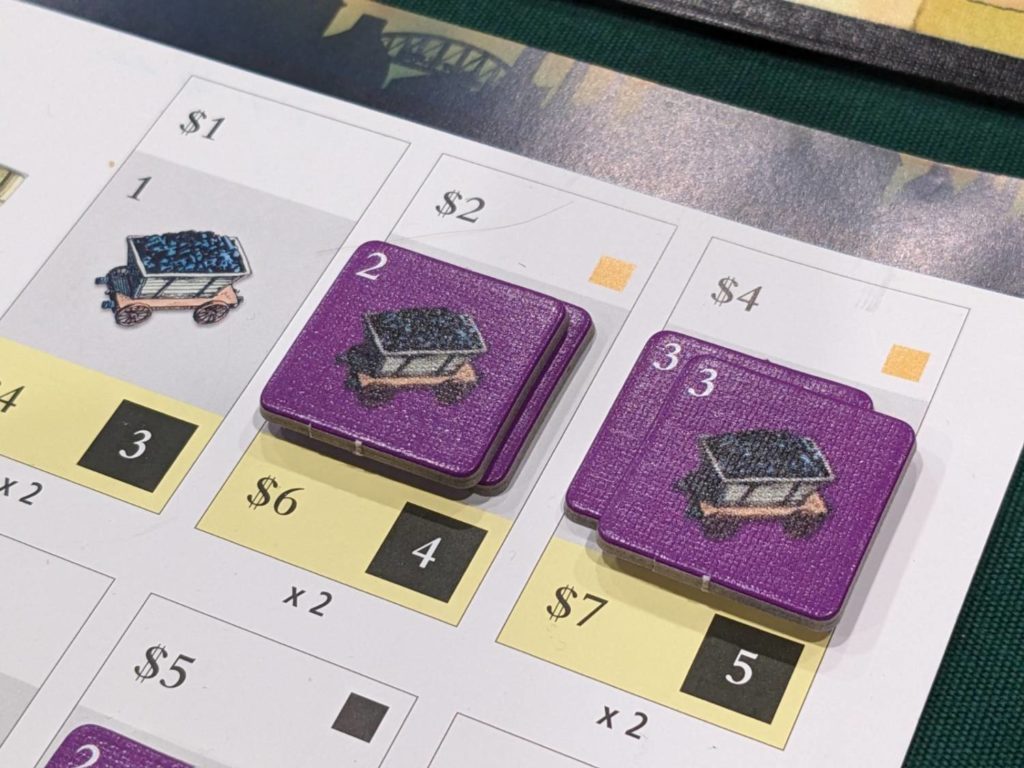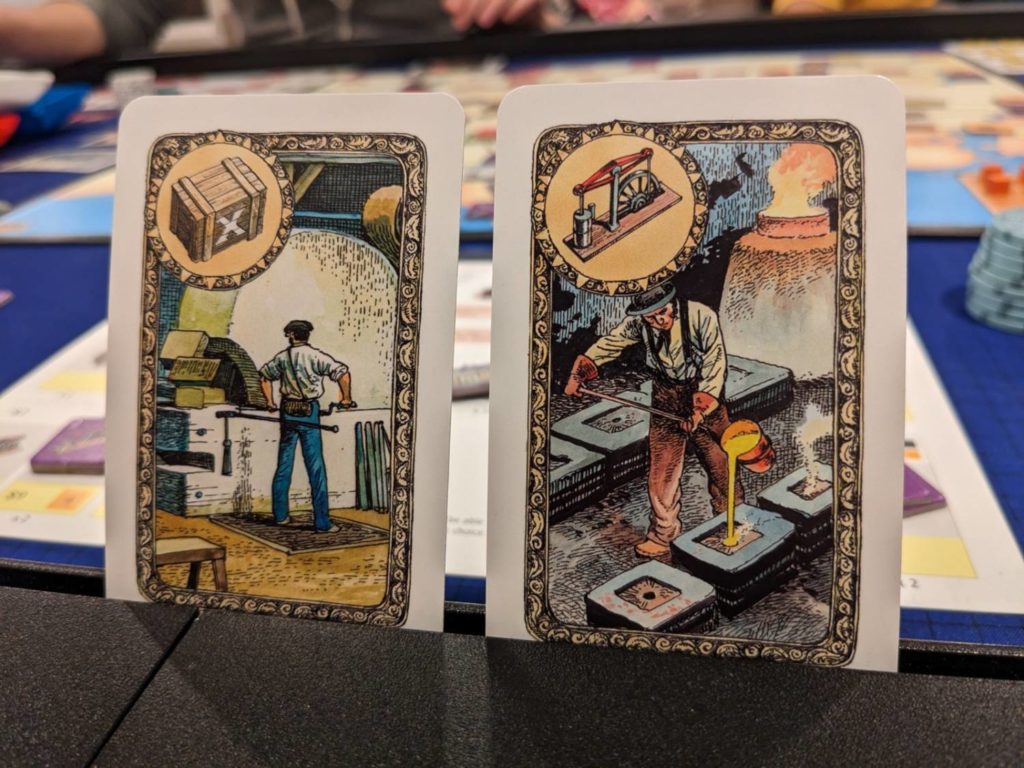Let’s start here: I love Brass.
Originally released in 2007, the Martin Wallace classic was updated and polished for a 2017 crowdfunding campaign and titled Brass: Lancashire. At the same time, a second Brass game was released, Brass: Birmingham, which uses the same core as Brass: Lancashire but adds a few twists to the gameplay.
Lancashire and Birmingham are revered by gamers both seasoned and new. But there is another Brass game that I was curious about too—so curious that I decided to keep an eye out for it on the secondary market in Chicago to buy it for myself.
That game is Age of Industry (2010, Treefrog Games). I was able to score a copy late last year that had never been opened by its original owner, and that person also sold me the first expansion, Age of Industry Expansion #1: Japan and Minnesota. I was thrilled to find a copy, and I’ve finally had the chance to get the game to the table.
For those looking for a way to push new players into the Brass system with a couple of friendly guard rails, Age of Industry is worth a look.

Same Brass, Less Cards
Here’s the executive summary on Age of Industry: it’s Brass, with less cardplay, less rules, and lower scores in a bland-looking production that fits 3-5 players.
Feel free to read my earlier piece comparing Lancashire to Birmingham to grab the basics of the game’s rules. Age of Industry still takes place during the Industrial Revolution, but our theater of operations has changed to either Germany or southern New England thanks to the double-sided board. And the maps offer different experiences because the easier side (Germany) doesn’t even allow one of the six industries available on the other side.
Players still fill the shoes of local tycoons, trying to build up their factories, cotton mills, shipyards, ports, iron works and coal mines to make the most cash. Building railway tracks to connect locations is still vital to both map completion and end-game scoring. Loans haven’t gone anywhere, but now they are a free action, instead of a card-driven one. (Even funnier: in Age of Industry, you begin play with zero cash!)
So, what’s different? First and foremost, Age of Industry offers a gentler entry into the world of Brass. Not easy, just a little less difficult.

It starts with the hand management rules of Age of Industry. In Brass, you’ll normally start a turn with eight cards in your hand, and you have to play one of them to take any action in the game. In Age of Industry, only three of the game’s seven actions require you to use a card.
This means you can normally save the cards you need to build where you want. And the cards you do have to use? They are much more flexible because city-based building actions only require discarding a matching region card, not specific cities. Want to build in the central-eastern portion of the Germany map? All you need is a card with a green square, instead of a card that specifically says Berlin or Leipzig, for example.
Age of Industry only has one era, not two like Brass. There is no end-of-round income, just one-time payouts when industries are completed. Need more cards? Players no longer draw cards at the end of their turn (if there are any cards left in the draw pile). Instead, players must choose the Draw Two Cards action in Age of Industry when they need more options. Even better: there are always two face-up cards to choose from, so you can even plan ahead by snatching the cards you need instead of top-decking new cards.
Age of Industry is incredibly flexible, but still features the same core mechanics as Brass when it comes to building within your network. Brass veterans will still be able to parse out where they can build new industries on a turn. Those decisions still carry a lot of weight in Age of Industry, and visualizing where other players might build is still very interesting.

So, What’s the Call?
To me, both Lancashire and Birmingham are untouchable. Brilliant designs, relatively easy to teach the base actions, beautiful on the table, and managing your hand of cards is one of the great mechanics in “the hobby.” And even though each of those games has just a single map, that map offers many interesting decisions to veteran players because your hand of cards is different from game to game.
Age of Industry? It is going to stay in my collection because it’s a fantastic warm-up tool for players I want to show Lancashire (I prefer that over Birmingham). Age of Industry is slightly shorter, and the player board serves as a great player aid that allows for a 15-minute teach. If I want to play Brass but have five players at my house, I can’t even play Lancashire because it caps at four players. That gives Age of Industry a nice edge for larger player count evenings.
If the Brass games are both a perfect 10, Age of Industry is just a tad below that. Age of Industry is not a looker: the plastic money components are terrible, the player boards are just sheets of paper, and there’s a ton of wasted space on the boards. Both the base game and expansion maps try to get away with printing some of the edge case rules on the board, but the print is so tiny that it’s hard across a large table.
Speaking of the expansion maps, I played Minnesota along with games on the Germany and New England maps preparing for this review. Minnesota really changed my approach: iron and coal behave a bit differently on this map, and Chicago (a city that takes up the majority of the southwestern quadrant) becomes an incredibly valuable location thanks to the number of spaces available there.
This is the kind of variety that ensures every game will look a bit different. I also love the way the game scales: with three, four, or five players (or two players with other expansions), you’ve still got the same deck of cards, so playtime lands in the 90-minute range no matter how many future tycoons are sitting at the table.
Age of Industry is an ugly duckling, but the decision space is incredible. I’m glad I took the initiative to add Age of Industry to my collection!











Add Comment